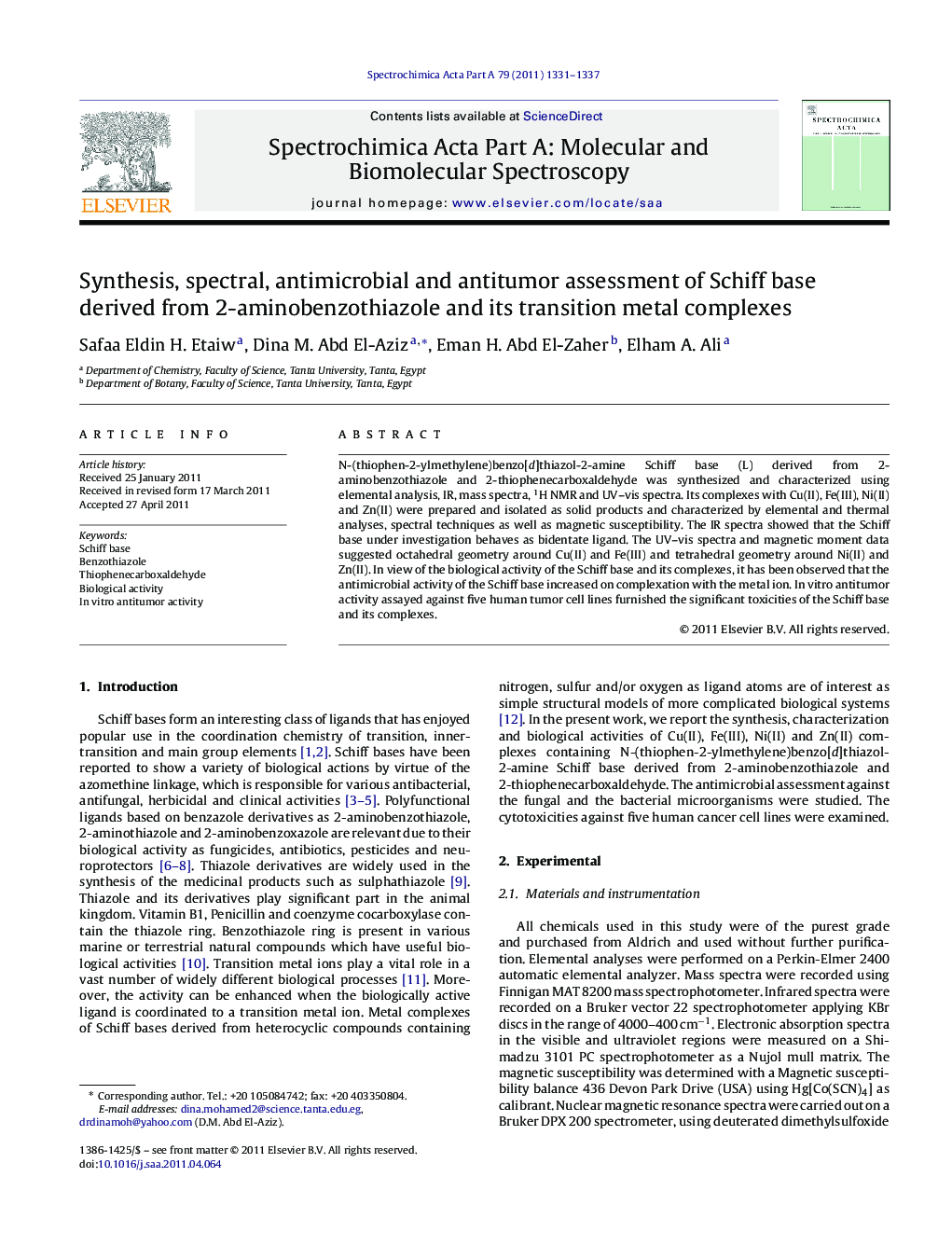| Article ID | Journal | Published Year | Pages | File Type |
|---|---|---|---|---|
| 1236528 | Spectrochimica Acta Part A: Molecular and Biomolecular Spectroscopy | 2011 | 7 Pages |
N-(thiophen-2-ylmethylene)benzo[d]thiazol-2-amine Schiff base (L) derived from 2-aminobenzothiazole and 2-thiophenecarboxaldehyde was synthesized and characterized using elemental analysis, IR, mass spectra, 1H NMR and UV–vis spectra. Its complexes with Cu(II), Fe(III), Ni(II) and Zn(II) were prepared and isolated as solid products and characterized by elemental and thermal analyses, spectral techniques as well as magnetic susceptibility. The IR spectra showed that the Schiff base under investigation behaves as bidentate ligand. The UV–vis spectra and magnetic moment data suggested octahedral geometry around Cu(II) and Fe(III) and tetrahedral geometry around Ni(II) and Zn(II). In view of the biological activity of the Schiff base and its complexes, it has been observed that the antimicrobial activity of the Schiff base increased on complexation with the metal ion. In vitro antitumor activity assayed against five human tumor cell lines furnished the significant toxicities of the Schiff base and its complexes.
Graphical abstractFigure optionsDownload full-size imageDownload as PowerPoint slideHighlights► N-(thiophen-2-ylmethylene)benzo[d]thiazol-2-amine interacts in a bidentate manner. ► Octahedral geometry around Cu(II) and Fe(III). ► Tetrahedral geometry around Ni(II) and Zn(II). ► Metal complexes have high antimicrobial activity. ► Zn-complex shows significant decrease in surviving fraction of human cancer cells.
